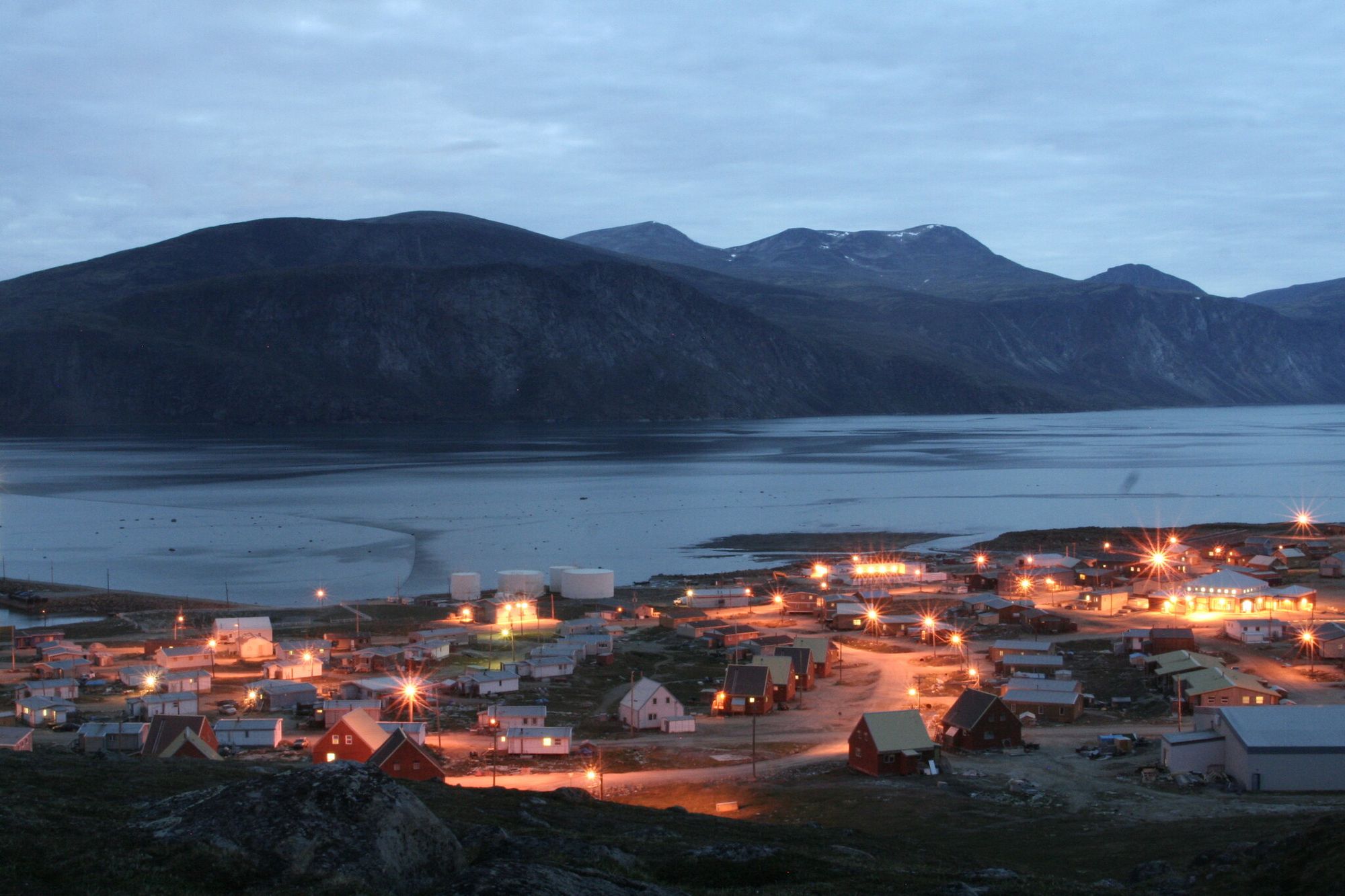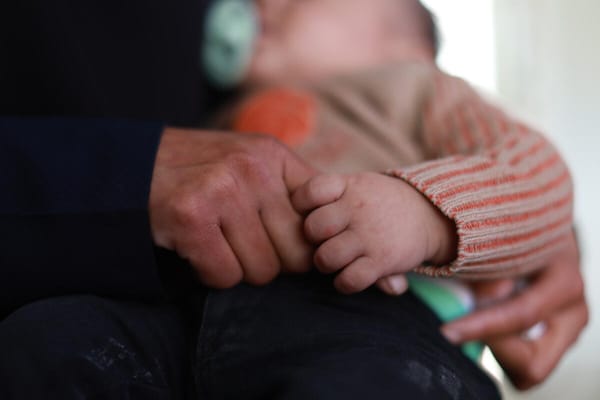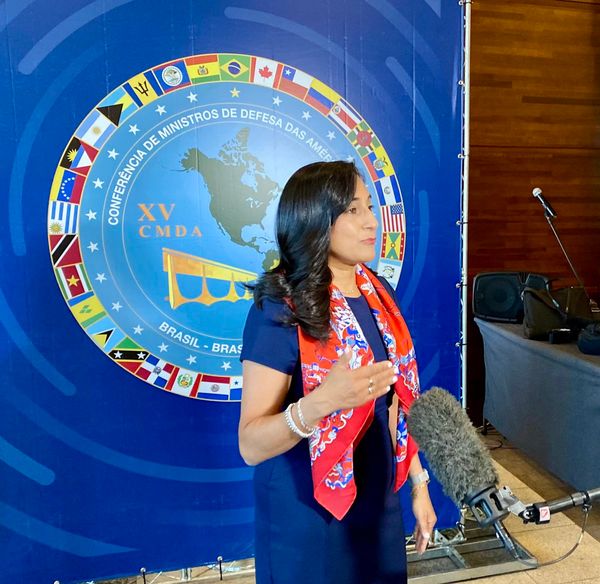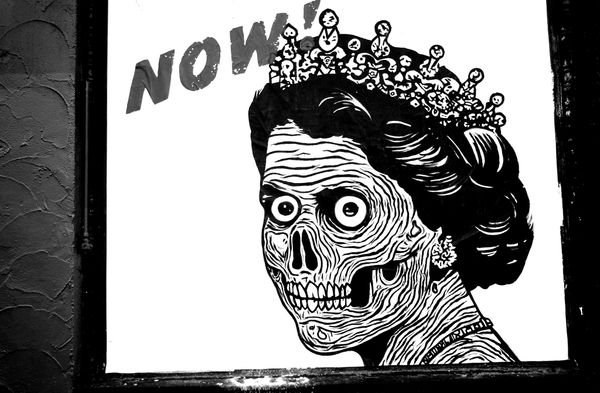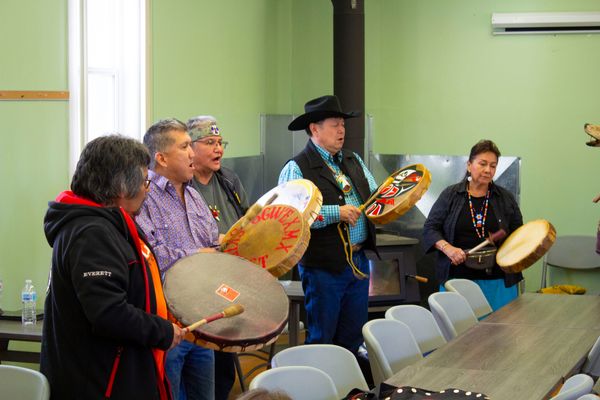From mid-October to mid-December of 2020, about 8,000 mostly Inuit residents of Iqaluit, Nunavut, couldn’t drink water from their tap due to fuel contamination of the city’s water supply. People were initially forced to gather water from the nearby river using whatever containers they had on hand, while the local hospital cancelled surgeries, businesses shut down or curtailed operations, and recreation facilities closed to reallocate staff to bottled water distribution.
A month into the crisis, the military’s water purification efforts, which had never been deployed in Arctic conditions, were scrapped for two weeks after “high winds” knocked over the tent covering the holding tanks. By that point, the sudden influx of plastic water bottles created a new environmental dilemma due to the lack of necessary recycling facilities in the North, requiring the many thousands of discarded bottles to be collected and shipped back to southern Canada by private companies. The whole situation was an unmitigated disaster.
Iqaluit’s water was finally cleared as safe to drink on December 10. But the fix was temporary at best. The city has experienced serious water infrastructure issues for years, including pipes regularly freezing and breaking due in part to their original construction using southern materials and methods not fit for Arctic conditions.
Climate change is another obvious factor: Iqaluit has already started to face water shortages due to record-low precipitation at its reservoir, necessitating emergency pumping from an additional lake in 2018 and 2019. Even the fuel contamination itself may be linked to climate change, with Iqaluit Mayor Kenny Bell noting that “we had a very warm and wet summer,” and, “I would say maybe the permafrost melted and our facility may have moved.”
A permanent solution to Iqaluit’s water crisis will cost at least $180 million. NDP Leader Jagmeet Singh has called on the federal government to fund this infrastructure. But so far, Ottawa has refused, despite the city being an important territorial capital and by far the largest municipality in Nunavut (in fact, it’s the only city in the territory). Smaller communities receive even less attention and support: at least seven communities in Nunavut were under boil water or do-not-drink advisories last year, with Igloolik and Baker Lake without drinking water for many months.
This regional water crisis encapsulates the Canadian state’s entire approach to the North — not only the territories but the northern parts of provinces (such as Labrador, Nunavik and Northern Manitoba) as well.
Despite constituting much of the country’s territory and serving as the site of most large-scale resource extraction — oil and gas, hydro, mining — most of the North is desperately immiserated and under-resourced. Conditions are devastating in severity and multitude: mold-infested and overcrowded housing; tuberculosis outbreaks; RCMP killings; disastrous jail conditions; high child mortality rates; suicide epidemics; astronomically expensive food; substance use issues; terribly inadequate healthcare; gender-based violence; and so much more.
Some might chalk this up to supposedly “natural” circumstances like small populations and challenging geography, such as remoteness and frigid climates. While these obviously play a factor, it’s far more about decades of racism, colonization, austerity, militarization and the plundering of the North for capitalist profit, leaving little for the vast region’s mostly Indigenous residents aside from apocalyptic environmental liabilities.
This is a deeply exploitative relationship of “underdevelopment,” explained by Guyanese historian Walter Rodney in 1972 as the places “with the greatest wealth of natural resources and yet the poorest in terms of goods and services presently provided by and for their citizens.” These conditions will only get worse as extreme weather increasingly decimates already inadequate services and infrastructure in the North.
The southern left in Canada all-too-often ignores the North in our work, save for occasional flashpoints of support. This is not uncommon to society more generally: while Canada loves to self-identify as a Northern nation through arts and sports, most Canadians actually live below the 49th parallel and rarely even think of the North.
It’s crucial that we break from this habit, and develop dedicated networks of solidarity with Northern Indigenous struggles. Our demands should be twofold: an end to colonial and capitalist ownership and control of the North, and the implementation of Northern reparations in line with rising calls for climate reparations to the Global South.
A Theory Of Underdevelopment
Contrary to the colonial imaginary and its agricultural “temperate-normativity,” the North is a place of tremendous abundance. Renowned Inuk author and activist Sheila Watt-Cloutier reminds us in her memoir, The Right to Be Cold, that, “The Arctic is not a frozen wasteland. Its ice and snow are teeming with life — not just marine and animal life, but human life.”
The same goes for the bountiful muskeg, river valleys, boreal forest, lakes and tundra throughout the North, which have sustained and been sustained by Indigenous peoples for many thousands of years. Such relations are highly sophisticated and systematized. Métis scholar Zoe Todd emphasizes that Indigenous relations with animals, in particular, reflect distinct “epistemologies, legal orders, and cosmologies” that are “rooted in long-term, reciprocal engagement between humans and a sentient, storied landscape.”
To speak of “underdevelopment” of the North, then, is certainly not to suggest lack of societal development. All human societies develop in radically different and complex ways. Rather, the concept of underdevelopment — as theorized in the 1960s and ’70s by revolutionaries such as Rodney and Kwame Nkrumah, and in the contemporary era by the likes of Samir Amin and Utsa and Prabhat Patnaik — describes a simultaneous process of destroying existing societal development and draining its wealth and resources.
Andre Gunder Frank argued in a landmark 1966 Monthly Review article, “The Development of Underdevelopment,” that “the now developed countries were never underdeveloped, though they may have been undeveloped,” and that “underdevelopment was and still is generated by the very same historical process which also generated economic development: the development of capitalism itself.” In other words, powerful capitalist countries — Canada, the United States, Japan, Western European states — developed through the underdevelopment of others.
Extreme lack of resources and power means that countries are trapped in incredibly exploitative and dependent relations with little ability to maneuver. Rampant poverty and polarization of the world is thus a foundational accumulation strategy for capital, not an accident or mistake; a recent study calculated that more than $2 trillion continues to be drained from the Global South each year.
While typically used to describe imperialist exploitation of the Global South by the Global North, this analysis of underdevelopment and dependency is equally relevant to understanding the ongoing exploitation of the North. The Dene Declaration, approved by “more than 300 delegates from all Denendeh communities” in 1975 and made public the following year as a demand for recognition of an independent Dene nation, stated this clearly: “Our situation in the North is the same as that of the peoples of the Third World who were until recently subjugated. As aboriginal people within a white society, we are a part of the Fourth World. We have been made Canadians by decree and not by our free choice.”
In contrast to the intensely controversial proposed Mackenzie Valley Pipeline, the declaration emphasized that “true development must give us more control and greater independence.” This represented clear resistance to ongoing colonization, exploitation, degradation and dependency of the North, and for Northern Indigenous self-determination that continued societal development as practiced for many thousands of years.
Extracting Resources, Leaving Destruction
In the decades since the Dene Declaration, Northern Indigenous peoples have courageously and successfully fought for greater self-determination through modern treaties, court cases, co-operative businesses, impact benefit agreements and protected areas. There have been real material concessions from capital and state as a result. Whatever critiques there are of the outcomes, the ceaseless struggle by Indigenous peoples propelling them forward shouldn’t be understated, especially given how few options there are within historical and ongoing colonization.
But as Nkrumah warned in the mid-1960s, “modern neo-colonialism is based upon the control of nominally independent States by giant financial interests.” While monopoly capital dominates every part of Canada, this analysis is especially relevant to the North, which the federal government has historically maintained “at the lowest possible cost.” Scholar Jack Hicks writes that “like most of Indigenous Canada, the Central and Eastern Arctic never experienced the investment in physical and social infrastructure that non-Indigenous parts of the country benefited from during the years of postwar Keynesian spending,” meaning that it was essentially “conceived in austerity.” As a result, many key services in the North are either privatized or nonexistent.
In the territories and the northern regions of many provinces, mining remains by far the largest economic sector, including the diamond mines of the Northwest Territories and gold mines of Nunavut. The companies that own these projects are among the biggest mining companies in the world: Agnico Eagle, De Beers, Rio Tinto. While royalty revenues to Indigenous nations and organizations have increased significantly over the years, geographer Warren Bernauer’s 2019 analysis of mining in Nunavut found that “profits generated by extraction flow to corporate headquarters and shareholders’ accounts, which are located outside of Nunavut.”
This predominantly extractive development approach is also extremely volatile: jobs and revenues may surge for a few years, but quickly collapse once profitability declines. Employment remains short-term and racially stratified, with the best-paying jobs usually going to white fly-in workers from the south.
As critiqued in the theory of “ecologically unequal exchange,” the enormous environmental impacts of this extraction are rarely accounted for either. For instance, there’s no remotely feasible or costed plan in place to clean up the 1.4 trillion litres of toxic tailings waste from Alberta’s oilsands, with a 2018 estimate predicting a potential price tag of at least $130 billion; plans are now being developed to authorize the dumping of tailings into the Athabasca River as a stopgap measure.
Despite claims of incredible technological advances, these sorts of ecological travesties are ubiquitous in the North, with many supposedly permanent storage plans for mine tailings and oil and gas fluids now at risk of collapse due to permafrost thaw (decades of military operations have also contributed their own devastating environmental harms in the Arctic.)
Unsurprisingly, impacts from past or present extraction — including hydroelectric dams — have devastating repercussions on alternative economies such as hunting and fishing, which can compound and worsen over time. Northern extraction sites have also been consistent hubs of COVID-19 outbreaks and gender-based violence.
Creating Dependence
The ongoing state of underdevelopment in the North means that governments and organizations remain intensely dependent on the meagre revenues and jobs provided by resource extraction, despite extreme environmental and social impacts. Services and infrastructure desperately need funding, and the federal government certainly isn’t stepping up.
Further, many potential alternative sectors in the North, such as commercial fishing, country food production, tourism, forestry, arts and renewable energy, remain largely undersupported at the scale necessary to provide a distinct development approach from monopoly capital ownership and control. Inuit co-operatives and Indigenous-owned businesses are important institutions, but their power and influence remain marginal compared to the enormous multinationals in play.
In such conditions, extraction companies can constantly blackmail Northern governments by threatening to close down operations if environmental regulations are strengthened or tax and royalty rates increased. While the ongoing process of devolution in Nunavut offers up the possibility of capturing far more of the resource royalties than at present (currently, only 2 per cent of the mineral rights are owned by Inuit while 80 per cent are owned by the Crown), scholars have voiced concern that this may result in the already austere federal government eventually cutting transfer payments as the territory receives more revenues from mining. This outcome could only further entrench reliance on resource extraction and capitalist development.
Resource extraction companies are the most obvious manifestation of monopoly capital exploiting conditions of underdevelopment. But there are countless other huge companies reaping sizable profits from the North, including via government subsidies, ranging from the ever-rapacious North West Company charging staggeringly high prices for food, to notorious American defence contractor, Raytheon, operating and maintaining the country’s North Warning System, to sealift companies such as Desgagnés delivering desperately needed supplies. OneWeb and SpaceX are now, according to the Verge, “vying to snag lucrative deals to provide broadband internet to Earth’s northernmost latitudes,” including the Canadian Arctic.
At the same time, the federal government is ramping up militarization of the Arctic in order to, as Jacqueline Medalye and Ryan Foster write, strengthen the conditions “necessary for multinational capital to take advantage of the economic opportunities provided by a changing climate.” These include buying fighter jets suitable for Arctic deployment, polar icebreakers and even an Israeli drone for surveillance, along with completing the construction of a new naval station on Baffin Island. While justified on the lofty basis of Arctic sovereignty, scholars argue this ongoing militarization must be understood as “an essential input into the expanded accumulation of multinational capital and prerequisite for stable investment.”
Most of these profits will continue to flow out of the North. And all depend on the continued underdevelopment of the region.
Supporting Northern Struggles
It’s clear that southern leftists must support all struggles against this continued exploitation and dispossession of Northern Indigenous peoples and their territories. Such struggles have been ongoing for decades: from the decade-long resistance at Wet’suwet’en, to the First Nations in Northern Ontario (Neskantaga, Fort Albany, Attawapiskat) opposing the proposed “Ring of Fire” mining development, to Inuit hunters blockading the airstrip and road at Baffinland’s iron ore mine for a week with support from residents across Nunavut and Canada.
Simultaneously, many other actions are being taken to fight for better mental health and community supports, Inuktut-language education, and child welfare jurisdiction during the horrors of the pandemic. All of these are clear assertions of self-determination, and demands for the right to develop their communities at distinct scales, paces, routes, and priorities than those imposed by multinational capital and the colonial state.
These struggles need to be prioritized in our movements, parties and communities, reviving the kind of dedicated southern solidarity organizing conducted in the 1970s by churches, labour, and NGOs that worked to stop the Mackenzie Valley Pipeline from being built. We need to contribute our time, resources and attention to individual fights against colonial and capitalist domination of the North.
We should also coordinate our struggles around the central demand of Northern reparations. As some have warned about devolution in Nunavut, the much-needed rescinding of colonial control of the North may result in loss of already inadequate federal funding, only increasing the territory’s reliance on extractive industries. The Yellowhead Institute’s May 2021 report, “Cash Back,” described that in the 1970s: “First Nations quickly learned that devolution was not self-government: it was self-administration without the funds.”
These would be near-ideal conditions for monopoly capital of all kinds to continue exploiting Northern underdevelopment for enormous profit, a quintessential example of Nkrumah’s description of neo-colonialism. To ensure that Northern nations and communities can build genuine self-determination and alternative economies — and for the settler south to begin to materially atone for colonization, climate change, theft of resources, toxic environmental liabilities, and decades of underdevelopment — enormous reparations are required.
The Need For Reparations
The concept of reparations has been most widely discussed concerning the Atlantic slave trade and genocide of Indigenous peoples in the Americas, such as the Caribbean Community’s “Ten Point Plan” and Ta-Nehisi Coates’ article “The Case for Reparations” in the Atlantic (both published in 2014). The Yellowhead Institute’s “Cash Back,” a companion analysis to its “Land Back” report, specifically called for “restitution from the perspective of stolen wealth,” emphasizing that “Cash Back is not a charity project; it is part of a decolonization process.”
There are other currents of this concept as well. Climate or ecological debt was first proposed in the early 1990s as a means of addressing ecologically unequal exchange and disproportionate use of environmental space by the Global North. In his brilliant book, A People’s Green New Deal, Max Ajl draws attention to the centrality of the concept in the “People’s Agreement of Cochabamba,” which emerged from the 2010 World People’s Conference on Climate Change and the Rights of Mother Earth, and was “endorsed by over 35,000 representatives of civil society, indigenous peoples and various states.”
Similarly, in his brand-new book Reconsidering Reparations, Olúfẹ́mi O. Táíwò forcefully calls for the development of a global reparations project that focuses on climate justice as a means of confronting what he terms the “global racial empire.” A previous analysis, co-authored with Beba Cibralic, described climate reparations as “better understood as a systemic approach to redistributing resources and changing policies and institutions that have perpetuated harm — rather than a discrete exchange of money or of apologies for past wrongdoing.”
Northern reparations could be a means of combining these approaches and addressing extreme underdevelopment and vulnerability to monopoly capitalist exploitation, particularly given the rapid climate impacts resulting from “Arctic amplification.” Immense resources are necessary in the North to not only radically improve living standards to adequate levels — housing, healthcare, roads, electricity, internet — but to prepare communities for increasing permafrost thaw, flooding, wildfires, drought, water shortages, changing animal migration, and much more.
Reparations are also needed so that Northern communities can exercise genuine ownership and control of these services, infrastructure and economic production. If mining or other resource extraction is determined as desirable, Northern Indigenous peoples would be in a position to exercise real control over negotiations and operations rather than entirely beholden to the amoral whims of monopoly capital. This process of autonomous development could also ensure that surplus remains in the North and invested in the things that communities need to survive and thrive, including through the creation or strengthening of regional alliances.
These tens or hundreds of billions of dollars should be seized from the accounts of monopolies, rich shareholders and southern governments — as well as from institutions of colonial control, such as the RCMP and military — and dispersed to governments, communities, and bodies like Inuit co-operatives and Hunters and Trappers Organizations. However, none of this can or should replace federal transfers and other existing supports: reparations go above and beyond that. Nor can they be reduced to a one-time cash payment. It’s about the forging of a new future, which requires constant commitment to genuine Northern self-determination and radical emissions reductions in the south.
Of course, all of this would gradually break the stranglehold that monopoly capital and the colonial state wields over the North. But it’s the only way that the immiseration of the North can be ended, alternatives to extractive industry developed and climate change prepared for. It will be an intensely difficult fight, but one that we have to begin. Northern reparations now.

